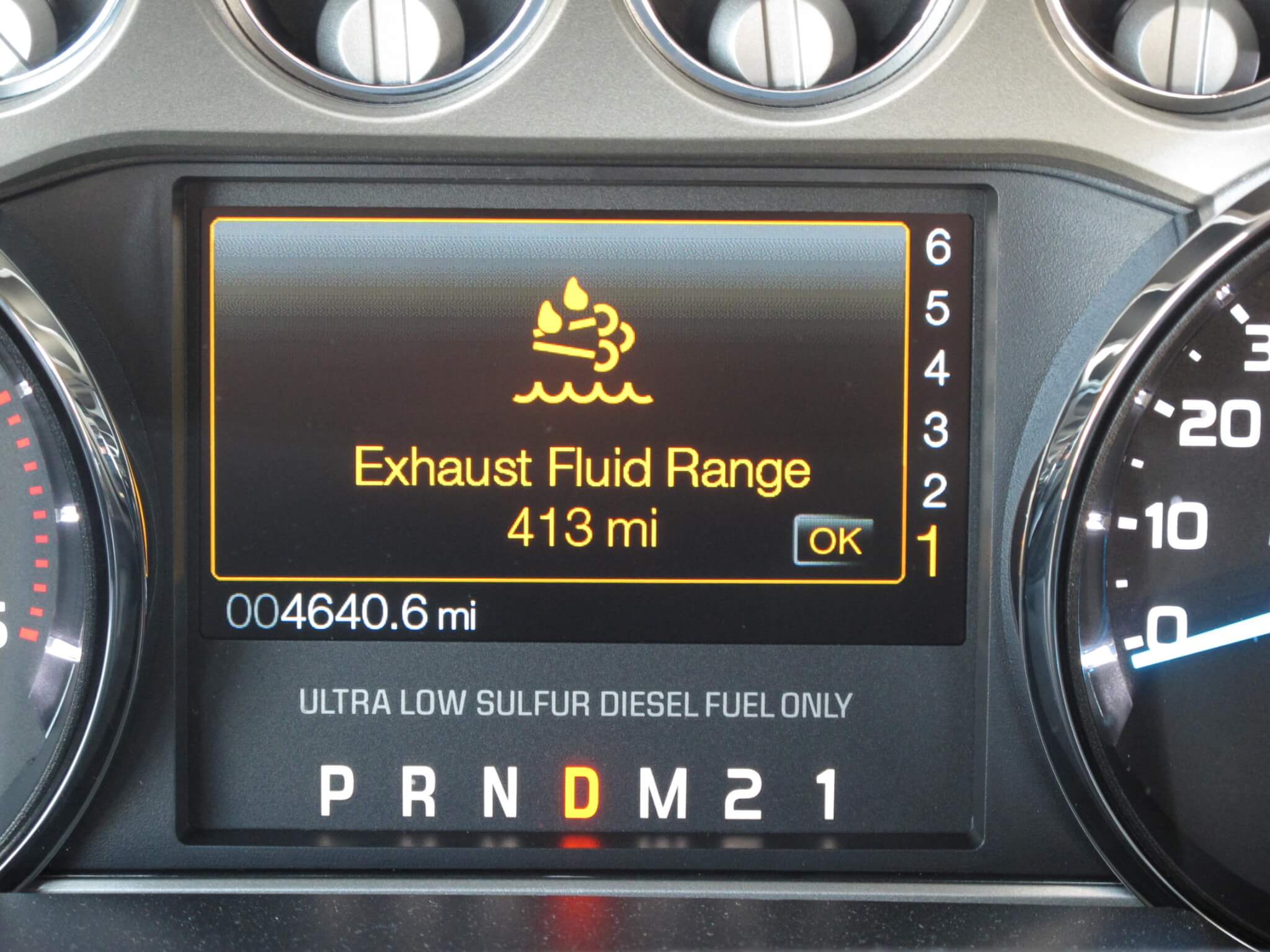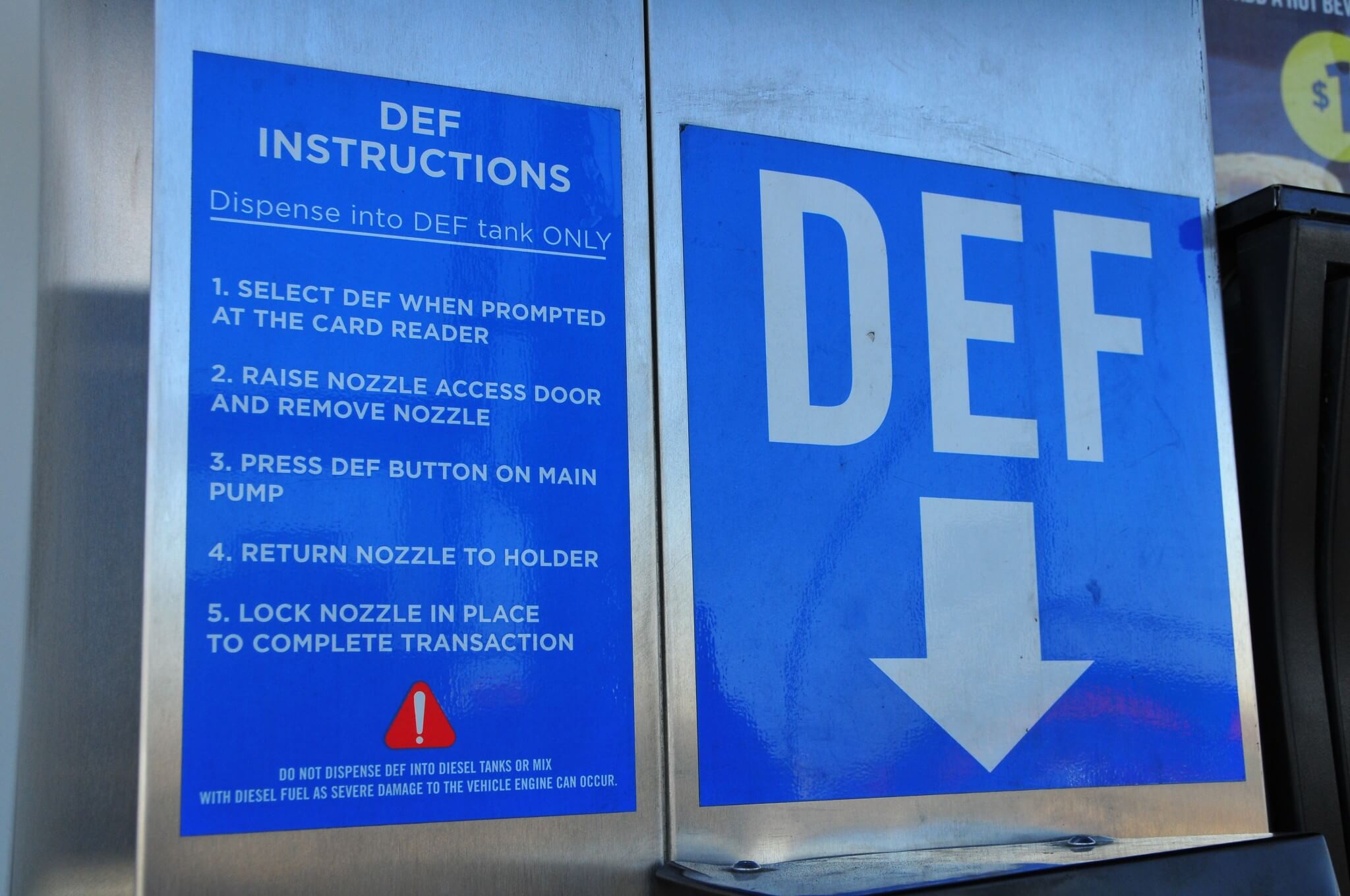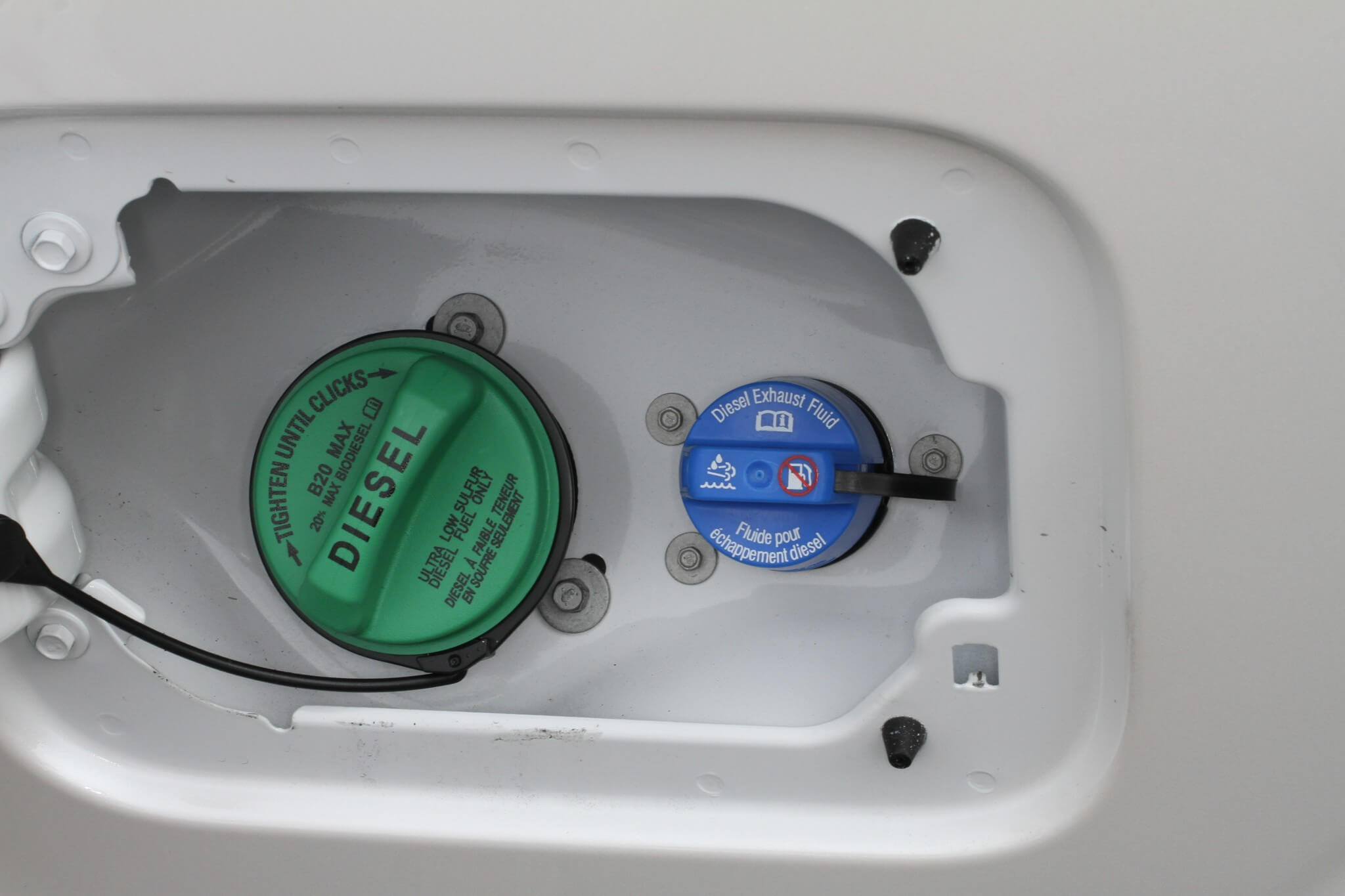Diesel Exhaust Fluid: Not Such a Bad Thing After All
When the U.S. government started requiring new ¾- and 1-ton trucks to have diesel particulate filters back in 2008 many saw it as the beginning of the end for diesel pickups as we’d known them. Then, in 2010, when the screws were turned even tighter with the advent of selective catalytic reduction (SCR), and the use of diesel exhaust fluid (DEF) in those systems, the crowd roared with doom and gloom.
The government cited studies that show that nitrogen oxides (NOx), elements in exhaust, contribute to acid rain, smog and increased greenhouse gas levels. Whether it’s all a bunch of hooey or not isn’t the issue. “Big G” decided that NOx had to go and the OEMs had to deal with it.
But a funny thing happened on the way to government-mandated cleaner diesels… the engines got stronger and more powerful. The key to selective catalytic reduction was cutting the level of NOx and this was done primarily through the injection of diesel exhaust fluid into the exhaust system to break the NOx down into harmless nitrogen and water. The DEF is stored in a separate tank and typically has a blue filler cap, although green and red caps are seen on some European cars.

DEF is made up of exactly 67.5 percent de-ionized water and 32.5 percent urea. It’s a tightly controlled fluid and is monitored by the American Petroleum Institute because DEF is clear, colorless and looks just like water. There’s a slight smell of ammonia and that’s because of the urea. One of the ingredients of urea is synthetic ammonia, while the other is carbon dioxide. The two ingredients are subjected to high temperatures and pressure to make the liquid that’s used in our diesel trucks.


DEF is not going to evaporate out of the tank in the summer as some have feared. Studies show that it would have to be a constant 120 °F for about two years before the DEF would turn into ammonia and disappear. And it’s not a toxic chemical either. In fact, many fluids in your truck (like diesel fuel, engine oil, wiper fluid, brake fluid and more) are much higher in their toxicity level.
So you see, DEF is not just a bunch of urine (what some people think of when they hear the word urea) and water that’s being injected into your truck’s exhaust. Therefore, the next time your buddy says he’s just going to urinate into the DEF tank, you can laugh at how dumb he is. Unless you’re the one who’s been saying that… and if that’s the case, then we offer our sincere apologies.

So, the fact that the OEMs have chosen to use SCR in this after-treatment form (the NOx reduction is done in the exhaust, not in the engine) means that they can build their engines pretty much any way they want. Gobs of horsepower and torque can be built into the engine and then all the NOx is taken care of with DEF. Clever, isn’t it? The OEMs say that they’ve been able to increase fuel mileage by about five percent using SCR/urea.
One reason that this technology has come out of the gate successfully is that it’s not a new thing to the diesel engine world. Nissan first used DEF in a diesel engine in Japan in 2004 and DEF has been used on stationary engines for a long time… decades, actually. Farmers are used to it. But they should be aware that automotive-grade DEF is much more pure than what they put into their stationary engines. That is why using DEF from the tank on the farm in your $65,000 diesel truck is not such a good idea. Use of agricultural DEF might even fool your truck into thinking the tank is empty, and that would trigger a “de-rating event,” which means you can only drive about five mph until you get some good DEF in the tank. Also, some will actually stop running. Either scenario would be unfortunate.
So there you have it. Diesel exhaust fluid was essentially mandated by the government as a means to cut down on the dirty smog coming out of diesel tailpipes, but in the end it allowed the manufacturers to go for more aggressive tuning on the engines. More power is good and it can mean better mileage too, which is something we can all get behind. DW
[divider]How DEF Works[/divider]DEF is the way it is nowadays. Most trucks built after 2010 require DEF, but it actually allows your engine to be more powerful while spewing out virtually no NOx.
The SCR (selective catalytic reduction) system is an after-treatment system, since it treats the vehicle’s exhaust after combustion.
- A fine mist of DEF is injected into the exhaust while the engine is running.
- The heat from the exhaust converts the DEF into ammonia.
- The ammonia, mixed with exhaust gases, reaches the SCR.
- The NOx emissions are broken down. The diesel particulate filter (DPF) then captures and incinerates soot during regeneration cycles.
- Water vapor, nitrogen and reduced emissions exit the exhaust system.









